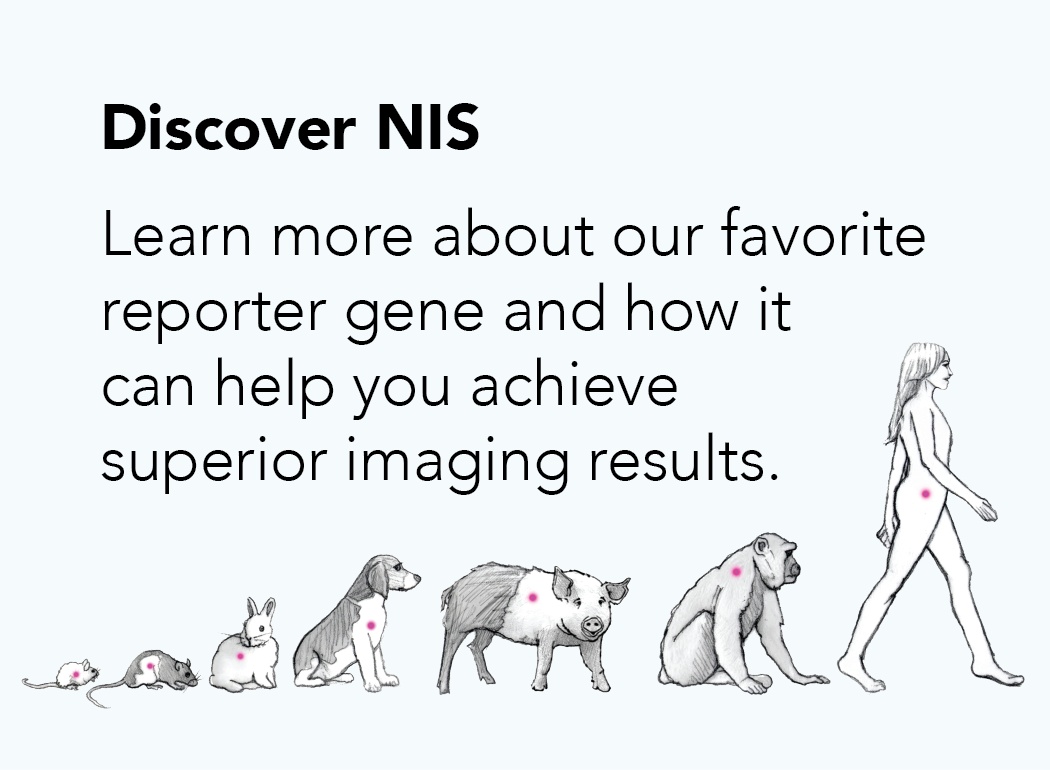Firefly luciferase (Fluc)
For noninvasive bioluminescent imaging
Firefly luciferase (Fluc), initially isolated from the firefly Photinus pyralis, is an enzyme that catalyzes the oxygenation of d-luciferin to oxyluciferin, producing visible light (530-640 nm). Several generations of Fluc have been engineered, each improving brightness. Unless otherwise specified, Imanis Fluc products have the Luc2 version of the protein (Accession no. AY738222), a highly optimized variant with exceptional brightness.
The bioluminescence produced by Fluc facilitates noninvasive optical imaging following the administration of d-luciferin.
-
Imaging
How to use luciferase for imaging
Reagents: d-luciferin (injection of 150 mg/kg of d-luciferin is recommended for imaging)
Equipment: An optical imager equipped with cooled CCD cameras can be used to detect the light produced by the oxidation of d-luciferin. The acquired bioluminescent image can be overlayed with a photograph taken by the optical imager to show the relative location of the bioluminescent signal.
Additional considerations: Bioluminescence peaks about 10-12 min after the administration of d-luciferin and slowly drops.
Workflow:

-
Applications
When to use luciferase
Bioluminescent imaging with Fluc can be used to noninvasively track the biodistribution of cells or viruses in pre-clinical regenerative medicine, gene therapy, oncology, and oncolytic virotherapy studies. Background bioluminescence of tissues is very low, so Fluc imaging has a very good signal to background ratio and excellent sensitivity in mice and other small animals, where the signal is relatively close (1-2 cm) to the surface of the animal. Thus, Fluc imaging is ideal for studies requiring the detection of a low number of cells or viruses. D-luciferin readily crosses the blood brain barrier, so Fluc can be used for imaging in the brain and CNS.
The Fluc signal is attenuated by tissue and signal brightness decreases rapidly with increasing tissue depth. Therefore, Fluc is not an appropriate reporter for large animal studies. Even the newer optical imaging machines equipped with 3D image generating capabilities produce low-resolution, surface-weighted images, so Fluc is not a good choice when high spatial resolution is required. As a foreign protein, Fluc is immunogenic and should not be used in immune competent animals for longitudinal studies.
Can’t figure out which reporter is best for you? Check out our page on Choosing a Reporter for helpful considerations and comparisons.

